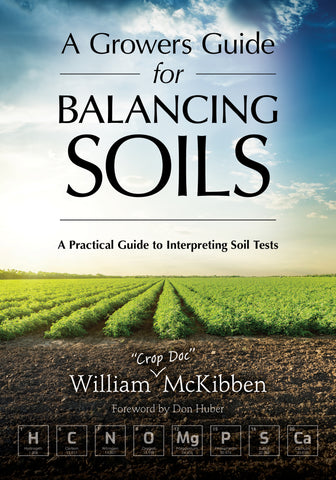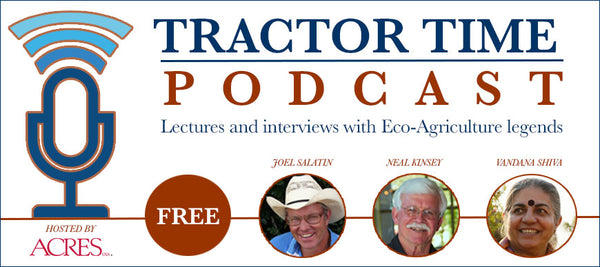
A Growers Guide for Balancing Soils
Whether you’re a serious home gardener or a full-time farmer, A Growers Guide for Balancing Soils will help you expand your understanding of the science behind plant nutrition. It all starts with the soil, but, as you’ll read, just spreading compost and hoping for the best isn’t a strategy for success.
Drawing on 40 years of experience using the Albrecht philosophy of balancing soils, William McKibben will walk you through a data-driven, time-tested process that starts with soil analysis, but doesn’t stop there. Productive soil that has the right balance of bio-available minerals and maximizes crop production and quality is the goal, and McKibben outlines a common-sense approach for how to get there.
For example, readers will learn how to:
- build a more complete soil-health management system;
- balance pH consistently across your fields with mineral balancing;
- create more resilient crops by knowing how soil health affects disease and pest pressure;
- and convert raw testing data into real action.
For both organic and conventional farmers, A Growers Guide for Balancing Soils dives deep into how macro-nutrients such as carbon, hydrogen, oxygen, nitrogen, phosphorus, magnesium, calcium and sulfur — along with potassium and micronutrients (cobalt, copper, iron, manganese, nickel, and zinc) — affect the development of healthy crops. It’s a problem-solver’s handbook for building soil health.
Copyright 2021. Softcover. 284 pages. 22 in a case.
Praise for A Growers Guide for Balancing Soils
William “Crop Doc” McKibben has shared his 40-plus years of research and experience in A Growers Guide for Balancing Soils to make nutrient management a key to unlocking the potential production and joyful reward that comes through a vigorous and well managed garden. It will be a valuable reference and guide for the home as well as commercial gardener who wants to reap the benefits produced through the miracle of plants.
– Don M. Huber, Professor Emeritus of Plant Pathology, Purdue University
Customer Reviews
My Farmer, My Customer
New! Learn from Marty Travis's experiences converting the Spence Farm into one of the most successful farming co-ops in the United States today.

